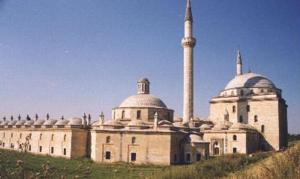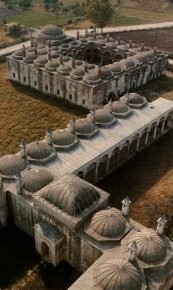 |
|
 |
Two vies of the Mosque of Bayezid II in Edirne. Top: A view that includes the prayer mosque with its minaret adjacent to a row of social service buildings. Bottom: A partial view of the entire complex. |
European city in Turkey.
In the European part of Turkey on the border to Greece and only a short drive from Bulgaria is Edirne, one of the treasures of Islamic architecture.
The first settlement on the location of Edirne was known as Uskudama. The Roman emperor Hadrian enlarged the city in about 125 AD and called it Hadrianapolis. In 387 the city witnessed a decisive battle, in which the Roman army was utterly defeated by the Goths. Its location at the crossroads between Europe and the entry to Asia meant that the city came under various rulers. It was ransacked twice during the crusades.
In 1362 the city came under Ottoman rule. Edirne now took on the role as a base for westward Ottoman expansion into Europe and developed in great splendour. It served as the empire's capital from 1413 until1458.
The (Mosque of Bayezid II) is considered the largest social service building of 15th century architecture. It was built in 1484 - 1488 by architect Khayr al-Din and consists of a hospital, a medrese, an Imaret (a trust for the distribution of food to students and others in need), a religious complex and granaries.
Edirne declined when the weakened Ottoman empire could no longer keep foreign invaders away. It was captured and occupied by Russia in 1829 and 1878, by Bulgaria in 1913, by Greece in 1920 and finally returned to Turkey in 1922. It now has a population of about 90,000.
 |
|
 |
Two vies of the Mosque of Bayezid II in Edirne. Top: A view that includes the prayer mosque with its minaret adjacent to a row of social service buildings. Bottom: A partial view of the entire complex. |